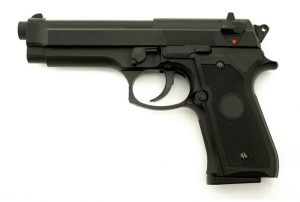 In a recent decision – Commonwealth v. Torres-Pagan – the Supreme Judicial Court affirmed the suppression of evidence that was seized as a result of an improper patfrisk of the defendant.
In a recent decision – Commonwealth v. Torres-Pagan – the Supreme Judicial Court affirmed the suppression of evidence that was seized as a result of an improper patfrisk of the defendant.
The basic facts were as follows. “While on patrol …, two officers observed a motor vehicle with a cracked windshield and an inspection sticker that had expired.” The officers stopped the vehicle, which was being driven by the defendant. “The officers got out of their cruiser and approached the vehicle. As they did so, the defendant got out of his vehicle and stood between the open door and the front seat, facing the officers. He then turned to look inside the vehicle on more than one occasion…. The officers placed the defendant in handcuffs and conducted a pat frisk of his person. When a knife was found in the defendant’s pants pocket, the defendant was asked if he had other weapons in his vehicle. The defendant indicated that he did, and the officers subsequently seized a firearm from the floor in front of the driver’s seat.” After the issuance of a complaint charging the defendant with various crimes, he filed a motion to suppress, contending that the evidence was discovered as a result of an unlawful patfrisk, in violation of the 4th Amendment. The judge allowed the motion and the Commonwealth filed an interlocutory appeal.
In its decision in favor of the defendant, the SJC stated, “During a stop for which there is constitutional justification, … a patfrisk is permissible only where an officer has reasonable suspicion that the suspect is armed and dangerous.” The Court noted that its “articulation of the patfrisk standard has not always been clear. On occasion we have not been as precise with our language as we could have been, specifically when discussing the patfrisk standard as it relates to the [less stringent] standard for exit orders.” “[I]n isolated instances we have [mistakenly] conflated the [two] standard[s].” “Accordingly, we clarify today that an exit order,” which “is considerably less intrusive than a patfrisk,” is “justified during a traffic stop where (1) police are warranted in the belief that the safety of the officers or others is threatened; (2) police have reasonable suspicion of criminal activity; or (3) police are conducting a search of the vehicle on other grounds. See [Commonwealth v.] Amado, 474 Mass. [147,] 151-152 [2016].
A lawful patfrisk, however, requires more.” “The only legitimate reason for an officer to subject a suspect to a patfrisk is to determine whether he or she has concealed weapons on his or her person…. We therefore do not allow such an intrusion absent reasonable suspicion that the suspect is dangerous and has a weapon.” Here, stated the Court, “the defendant’s actions, without more, did not justify a patfrisk.” The Court discounted “[t]he fact that the defendant turned to look into the front seat of his vehicle more than once after he got out…. At most, such action would suggest that the defendant had something of interest in his vehicle, not that he had a weapon on his person.” Moreover, the defendant “made no furtive movements; … his body was fully visible to the officers; he was fully compliant with all commands issued by the officers; and he was outnumbered.”
If you or a loved one is in a situation where the police obtained evidence against you as the result of a patfrisk, you will need an attorney to fight to suppress that evidence. Attorney Daniel Cappetta is an experienced and skilled attorney who has litigated numerous motions to suppress. Call him today for a consultation to determine whether you have a strong motion that should be litigated.
 Massachusetts Criminal Lawyer Blog
Massachusetts Criminal Lawyer Blog

